Ken Micallef is one of the most passionate jazz record collectors I have ever met. He has strong opinions, not all of which I agree with, yet I have managed to forge a solid friendship with him over the years. His outspoken perspective can most readily be experienced on his YouTube channel, which has managed to gather over 17,000 followers since 2017.
Ken has paid his dues. During an epic 30-year residency in a West Village walkup, Ken has gigged as a jazz drummer, authored countless equipment reviews as an audio critic, covered jazz for DownBeat and JazzTimes, and held down a weekend gig at the Jazz Record Center on West 26th Street.
Ken and I have long debated the various merits and shortcomings of original pressings versus reissues of classic jazz albums. Our discussions recently culminated in Ken inviting me to a critical listening session on his own turf, at his own apartment, with his own hi-fi. I gladly accepted, and we had a great time chopping it up about the hobby.
I met up with Ken on a warm Saturday evening right before he finished his shift at the Jazz Record Center. After closing the shop, we dipped around the corner to a nearby sports bar for a drink. Always a light sleeper away from home, I ordered a coffee with cream and sugar. Ken got an old fashioned. Afterwards, we took a congested cab ride down 7th Avenue to his place.
 |
| Ken’s backyard: New York City’s West Village |
We arrived amidst a crowd of twenty-something bar hoppers. Once inside, Ken recommended a quick “fourth floor break” during our climb up the building’s seven-story staircase. At the very top, Ken graciously opened the door to his living space, which had all the clutter of a tenured college professor’s office. In the back were two adjoined rooms used to house Ken’s records and his impressive collection of audiophile equipment.
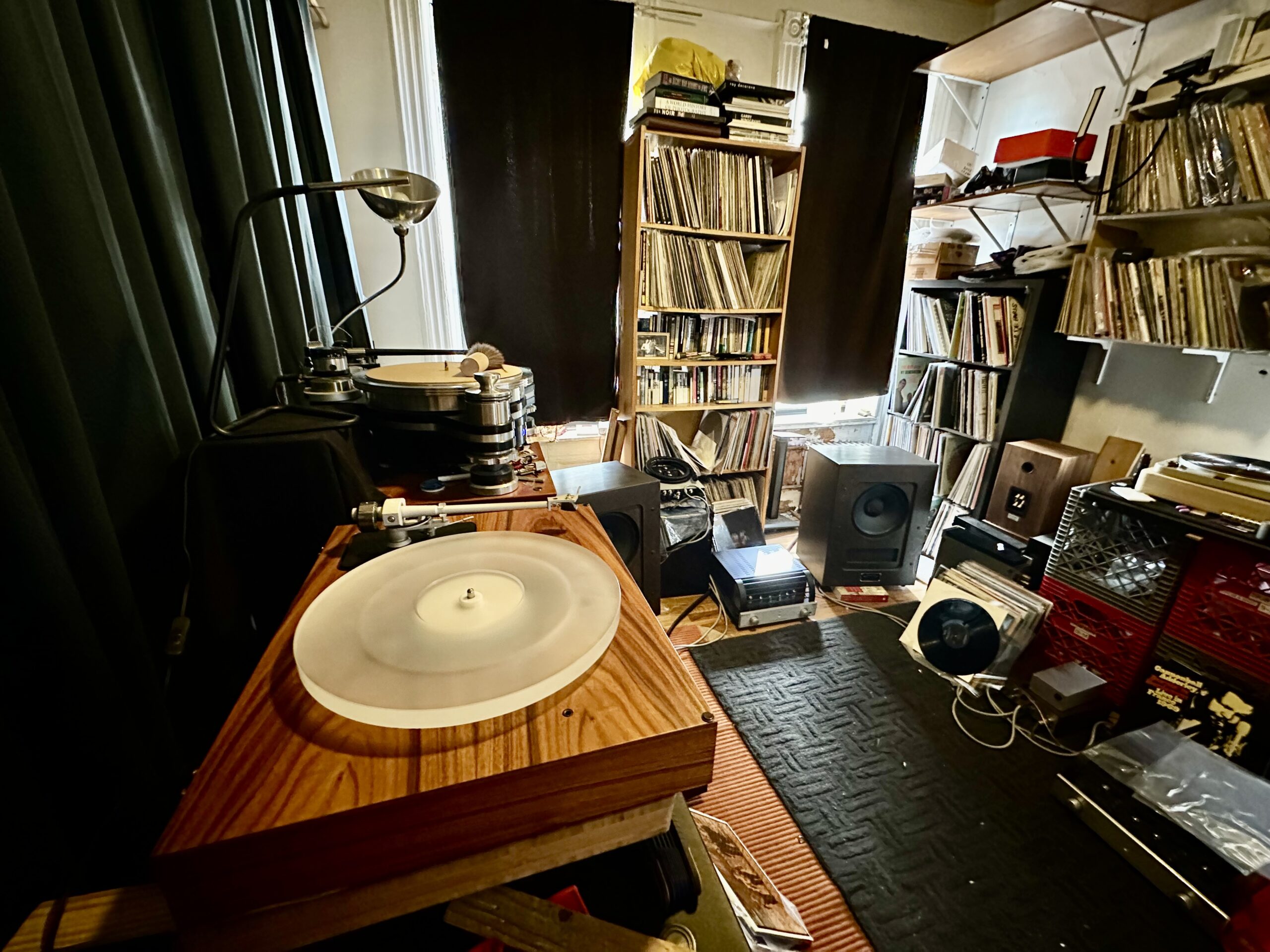 |
| Ken’s listening room |
A chair was set up in the sweet spot between a pair of Heretic AD614 coaxial speakers on loan for a Stereophile review. On one side were two racks of gear including a VPI Avenger Direct turntable equipped with a Hana Umami Blue moving coil cartridge (microline stylus tip), a PrimaLuna tube phono preamp, and various other gear he was in the process of reviewing. On the other side sat a vintage Thorens TD-124 idler wheel turntable complete with a Wand Plus tonearm and Luxman LMC-5, also a moving coil cart but sporting a Shibata tip.
 |
| The Heretic AD614 loudspeaker |
On all sides were shelves full of records, and I quickly located his vintage Blue Notes, which were sorted by artist. An exciting early find was an original mono pressing of Hank Mobley’s Workout. The outer sleeve had a yellow and red Jazz Record Center price tag reading $75.00, as well as a green sticker indicating a record being sold on consignment for legendary Blue Note collector Larry Cohn. (Who knows when Ken got this record at that price!)
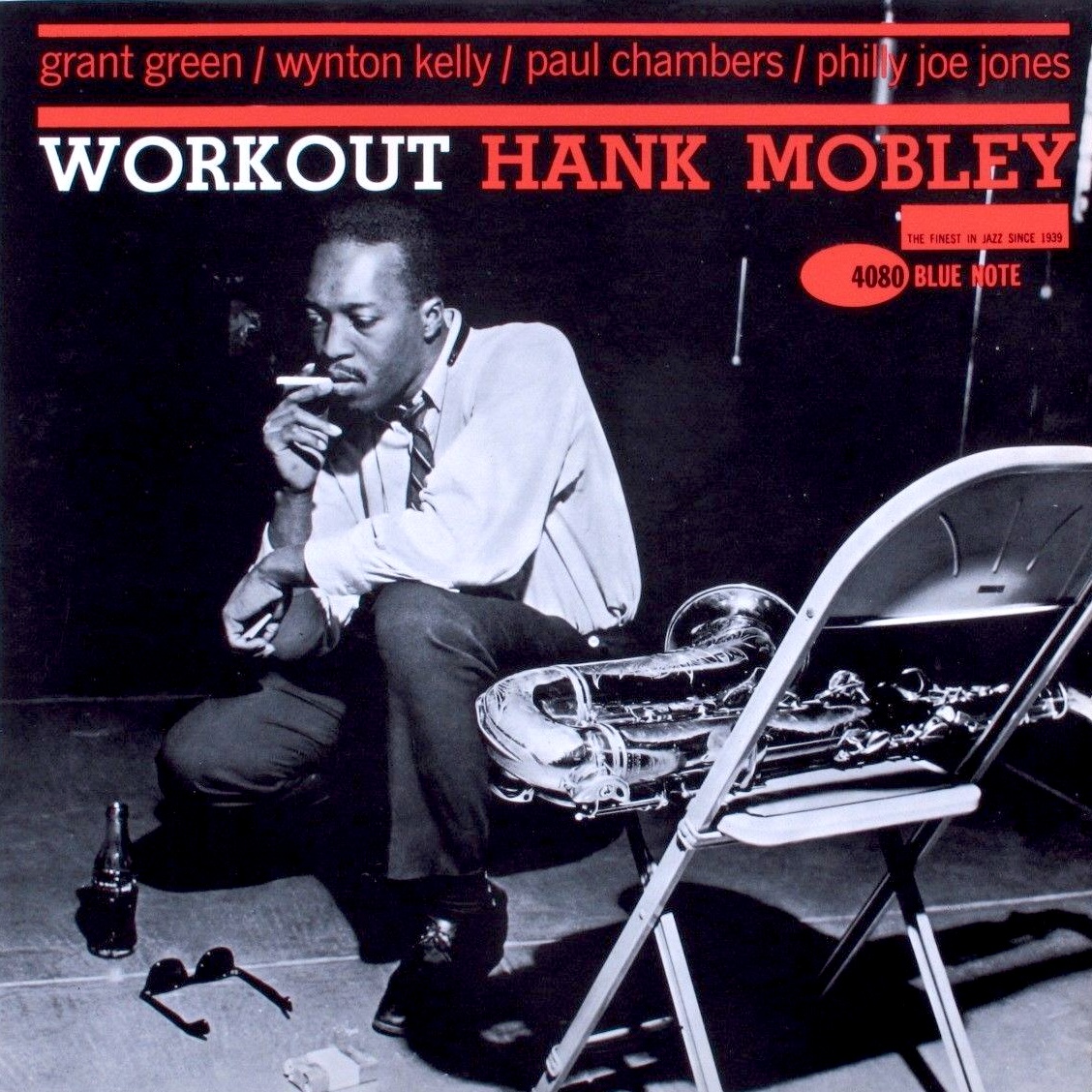 |
| Original mono pressing of Hank Mobley’s “Workout” |
We started our listening exercise with the Mobley album playing on the Thorens turntable, which was going through an Aurorasound Video MKII solid state phono preamp and a Triode Lab 2A3 EVO integrated tube amp. (The signal was stereo, not mono.)
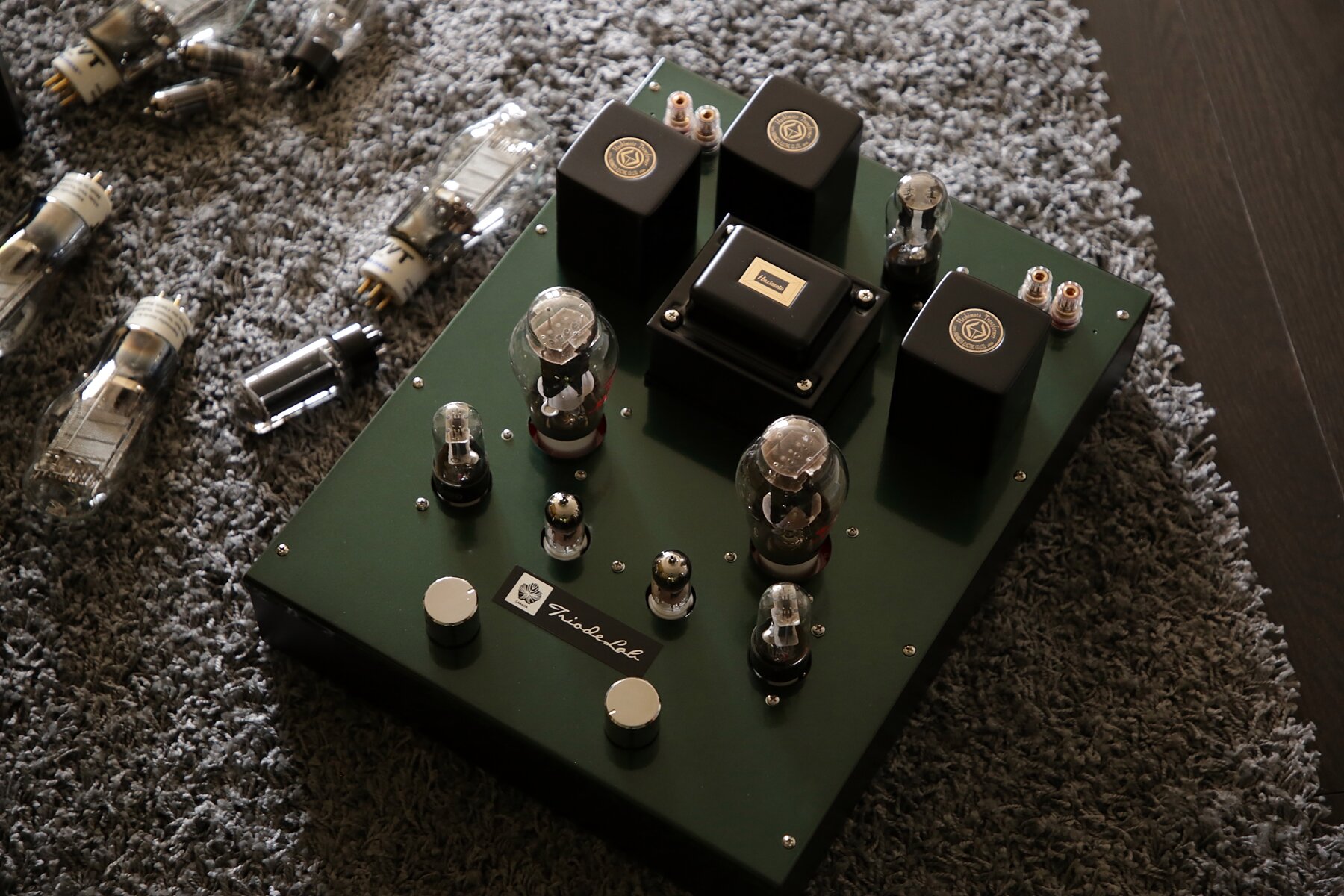 |
| Triode Lab 2A3 EVO integrated tube amplifier |
On first listen, playback sounded relatively dark with a strong emphasis on the midrange—not necessarily a bad thing of course, as these original jazz albums were typically mastered with a similar frequency curve. I have also found that tube amplification tends to emphasize the midrange. From there we shifted the same Mobley record over to the VPI turntable and ran that through the PrimaLuna phono pre instead. Here the midrange was still emphasized but playback was favorably brighter, which I assume was largely due to the Hana cart.
 |
| Ken’s Thorens TD-124 turntable |
We then decided to do an “original versus reissue” shootout. The album of choice was Relaxin’ with the Miles Davis Quintet. First we threw on the Analogue Productions 33 RPM mono reissue. Playback was more balanced than with the Mobley original, the highs shimmered and the midrange was less emphasized. Switching over to the original (and listening past the surface noise of what sounded like a copy in VG or “very good” condition), the difference was significant. The cymbals were less present because of the original’s darker frequency profile, and while again the midrange dominated as it did with the Mobley LP, I noticed that the detail of the upright bass was clearer as a consequence.
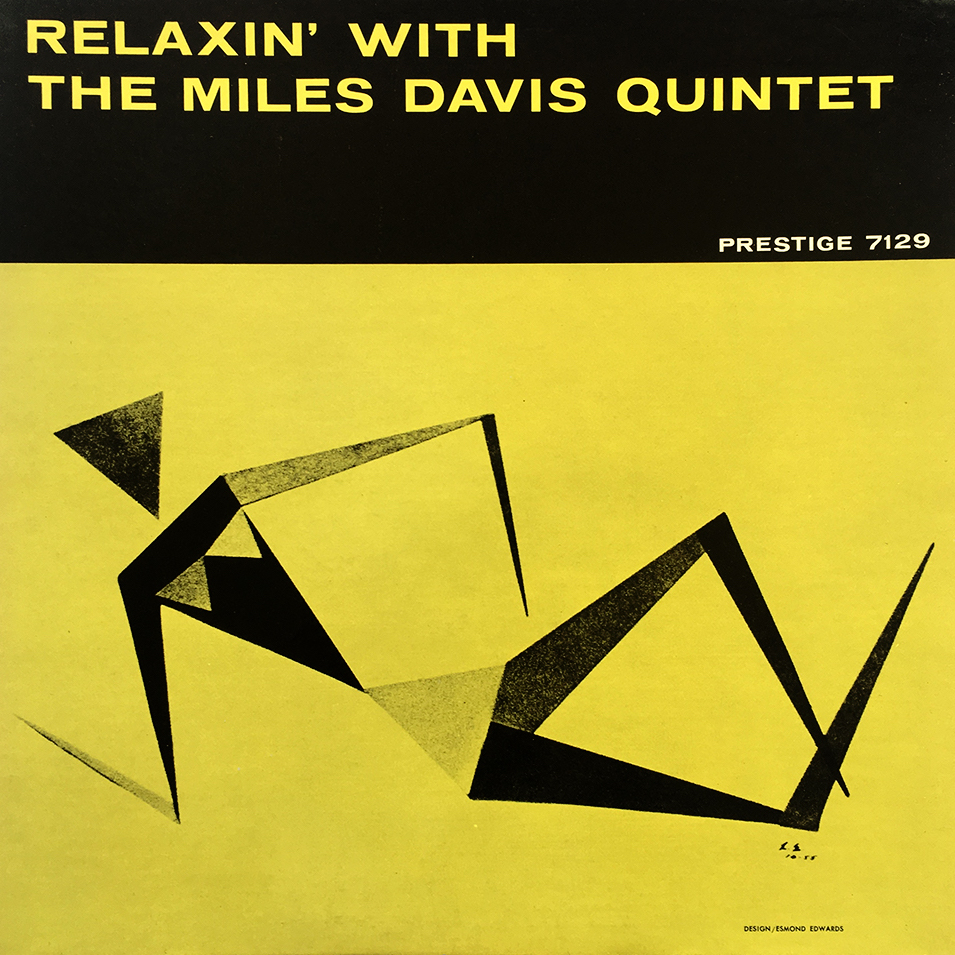 |
| Agreed upon weapon of choice for our “originals versus reissues” shootout |
But I detected an even more significant difference. The soundstage of the reissue seemed to “hit an invisible wall” in front of me somewhere around where the speakers were positioned in the room. By comparison, there was something about that emphasis on the midrange with the original that made it feel like the music itself was “stretching out” and reaching towards me in the room. With the original the musicians felt closer to me and thus the soundstage felt larger. The reissue had a “flatter” presentation and thus sounded more like “a recording”. (Full disclaimer: Without comparing the pressings back-to-back like this, I surely would have thought nothing of this “lack” in soundstage with the reissue.)
Ken boasted his strong preference for the original while standing over my shoulder, and I reminded him that he is in a unique place of privilege when forming his opinion. He has lots of original pressings and high-end audio equipment that can really make a difference in how these older records sound. Not everyone has that luxury. A lot of jazz fans, especially those who are relatively new to the genre, have primarily listened to the music with much more modest equipment by way of digital media and/or contemporary vinyl reissues. Their listening background is the complete opposite of Ken’s, and the nuances created by a combination of audiophile-grade gear and original pressings are virtually absent from most jazz fans’ experience. This is why I understand when collectors express their preference for the sound of reissues. It’s also possible that they simply prefer the cleaner, more even presentation of the music over what I might call the more “human” presentation of originals. I also understand why someone like Ken thinks originals tend to sound better. To overstate the obvious, no one is objectively “right” here.
I also want to emphasize that, in the grand scheme of things, I feel that these differences in presentation are marginal and largely the consequence of spending thousands of dollars more to achieve the same end goal of enjoying the music. These “improvements” are a luxury and not at all a necessity.
 |
| Ken (left) talking tubes with Leeds Radio’s Richard Matthews for a Stereophile interview in 2018 |
After the shootout we switched back over to the Thorens. As I pulled an original mono pressing of Wayne Shorter’s Speak No Evil from Ken’s shelves, he remarked that Shorter is probably his favorite Blue Note artist and the label’s greatest composer. I asked Ken to drop the needle at the beginning of the third song on Side 1, “Dance Cadaverous”. It’s hard to deny that listening to an original pressing on audiophile equipment like this is indeed quite special. Hearing this album in mono for the first time after hearing it countless times in pristine, crystal-clear stereo was a very different experience to say the least, and hearing this pressing in this particular way made me feel closer to the music and the artists, not just in space but also in time. (I also believe it’s easier for me to appreciate the special beauty of an original mono pressing like this when I haven’t invested hundreds or thousands of dollars in it myself.)
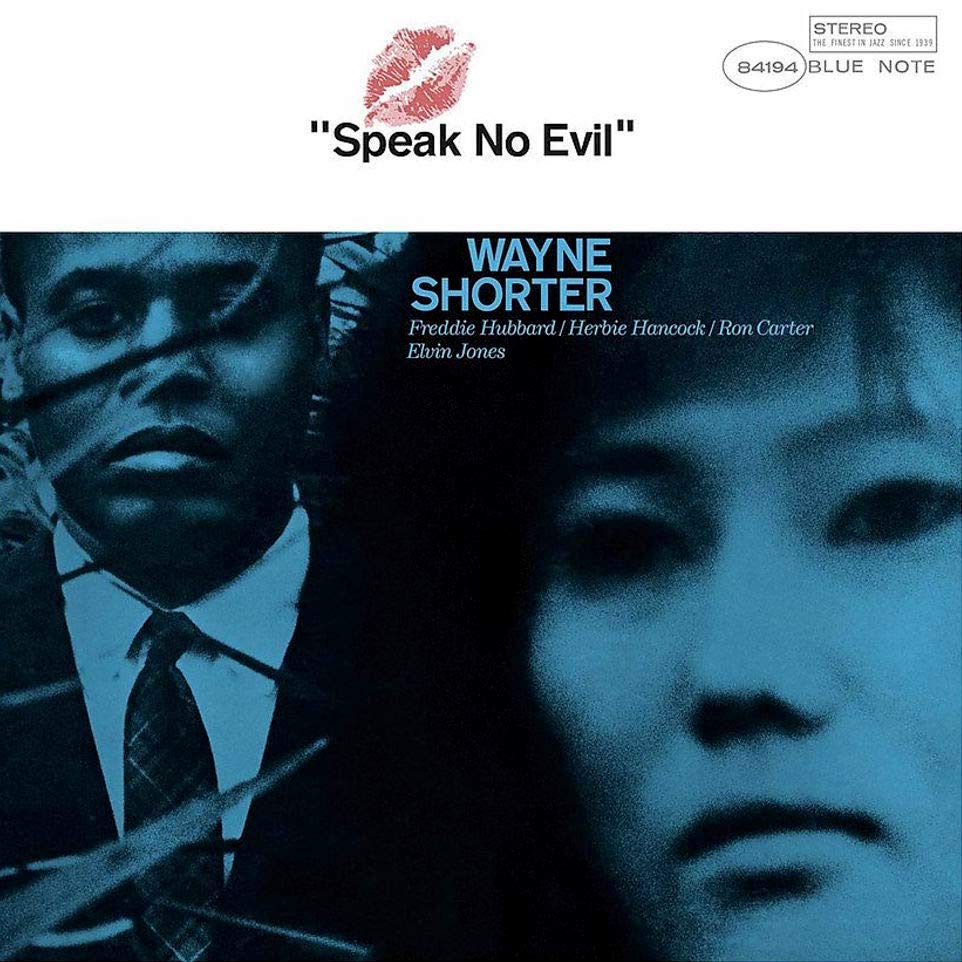 |
| The Shorter classic sounded “close” in both space and time at Ken’s |
Ken then played me a reissue of Ben Webster’s Soulville on Verve. He felt that there was something special about this recording, and he even conceded that this audiophile pressing sounded outstanding. I agreed. After that, I told Ken I had to meet up with some friends in Brooklyn, ordered an Uber, and we said our goodbyes.


“SOUNDS” like a lot of fun. Been doing it for 60 years. If you think you’ve ever got the edge on MONO recordings best let yourself indulge via a mono cartridge for THE real thing.
Rich: Awesome article as usual. As someone who straddles both camps, I see the merits in both collecting and listening approaches. I’ve tended to gravitate towards either original pressings or digital listening as the cost of these reissues seems to have gotten almost as crazy as the price of some of the originals. As an aside, I continue to be flabbergasted on how many fairly obscure records have been reissued over the last few years. I get why the record labels are milking their catalogs but am surprised that there are that many new collectors seeking these artists out on vinyl.
Beautiful reportage, Rich, like being there, thank you, comparison is education.
Nice of you to drop by, sir!
The Real Jazz Vinyl Lover (aren’t we all?). It was an interesting read, and I mostly agree with Ken’s statements on original pressings. So I knew this article would be a good one. Thanks!
I don’t know if my Tinnitus would allow me to tell the difference in original or reissue. However, I feel more connected to originals, whether it historical significance or sentimental value.
Thanks for the article.
Nice article and you provide great perspective.